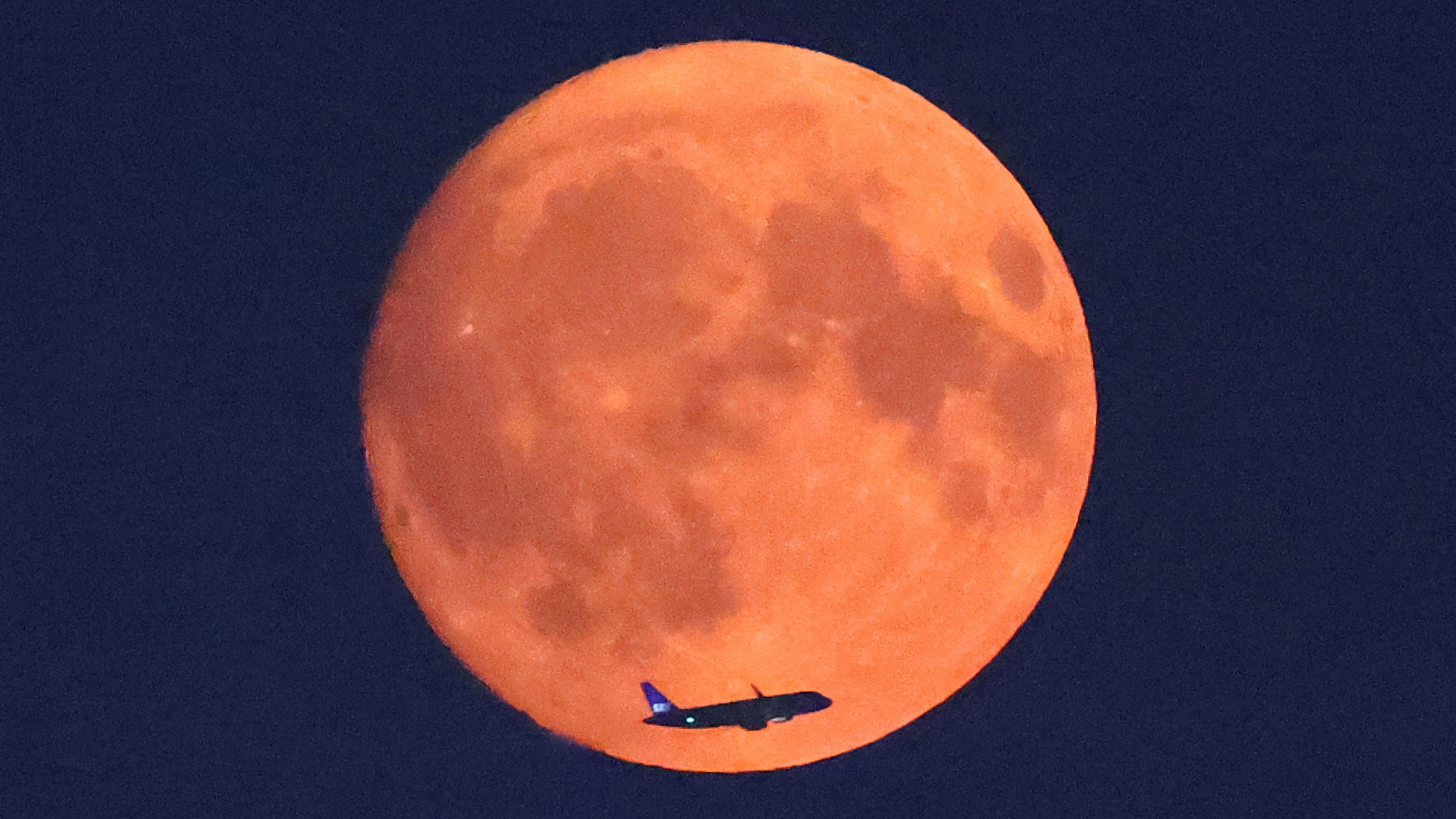In pictures: Blue supermoon glows red

A plane passed the supermoon over Parliament Hill, London
- Published
Monday's full supermoon - also a blue moon - turned red in a dramatic way on Sunday night.
The glowing sphere has been seen across the UK but there is still a chance to catch a glimpse in the coming days.
It was also captured rising in Northumberland on Sunday evening
Shades of orange and red could be seen in the skies above the UK
Red - not blue - full supermoon
Despite being called a blue moon, the moon doesn't actually turn blue.
But, it did turn red on Sunday night because of North American wildfire smoke sitting in the atmosphere above the UK.
Smoke particles mean that light passing through the atmosphere is scattered in such a way that the orange and red colours of the spectrum are more visible than usual.
The smoke also meant skies were hazy and had an orange tinge over the weekend with an impressive sunset on Sunday night.
Smoke particles will start to clear on Monday as cloud and rain moves in from the west.
Why is it a blue moon?
As the lunar cycle is 29.5 days, eventually this gets out of sync with our calendar where you normally have one full moon a month.
Blue moons are most commonly defined when we get an extra, 13th full moon in the year.
So the second full moon in a month becomes the blue moon.
However this blue moon comes from an alternative, more traditional definition when the lunar cycle results in any season having four, not three full moons.
So where we'd normally have three full moons each season. If there are four, the third full moon is then given the status of a blue moon.
As blue moons are not that common, it's thought where the phrase "once in a blue moon" comes from.
The red - not blue - blue supermoon captured so it looks like it's sitting on a picnic bench in Derbyshire
People gathered while skies were clear to catch a glimpse of the spectacle
This full moon also happens to be a "supermoon".
A supermoon occurs when the full Moon coincides with when the moon is at its closest point to earth in its orbit - the perigee.
It can appear brighter and larger in the night sky.
This is the first of four supermoons this year.
The full moons of September, October - the closest moon this year - and November will also be supermoons.
This map shows where cloud cover may hinder your view of the spectacle on Monday night
Can I see the blue supermoon tonight?
The full blue supermoon will become 100% full at 19:25 BST on Monday evening but many us of may not actually get to see it.
Moon rises at around 20:50 BST in the roughly east sky and will then set on Tuesday morning at around 06:35 in the western sky.
However, the weather forecast is not looking all that favourable with cloud and patchy rain spreading eastward across the UK.
There will be some limited times where the skies should clear at different stages of the night.
While the blue supermoon won't technically be full on Tuesday night, it'll still be near-full and there'll be greater chance of clear skies.
麻豆社 Weather Watchers had different ways of capturing the orange supermoon like this in Selsey, West Sussex
The full blue supermoon rising on Sunday evening in North Yorkshire
- Published31 August 2023
- Published30 August 2023